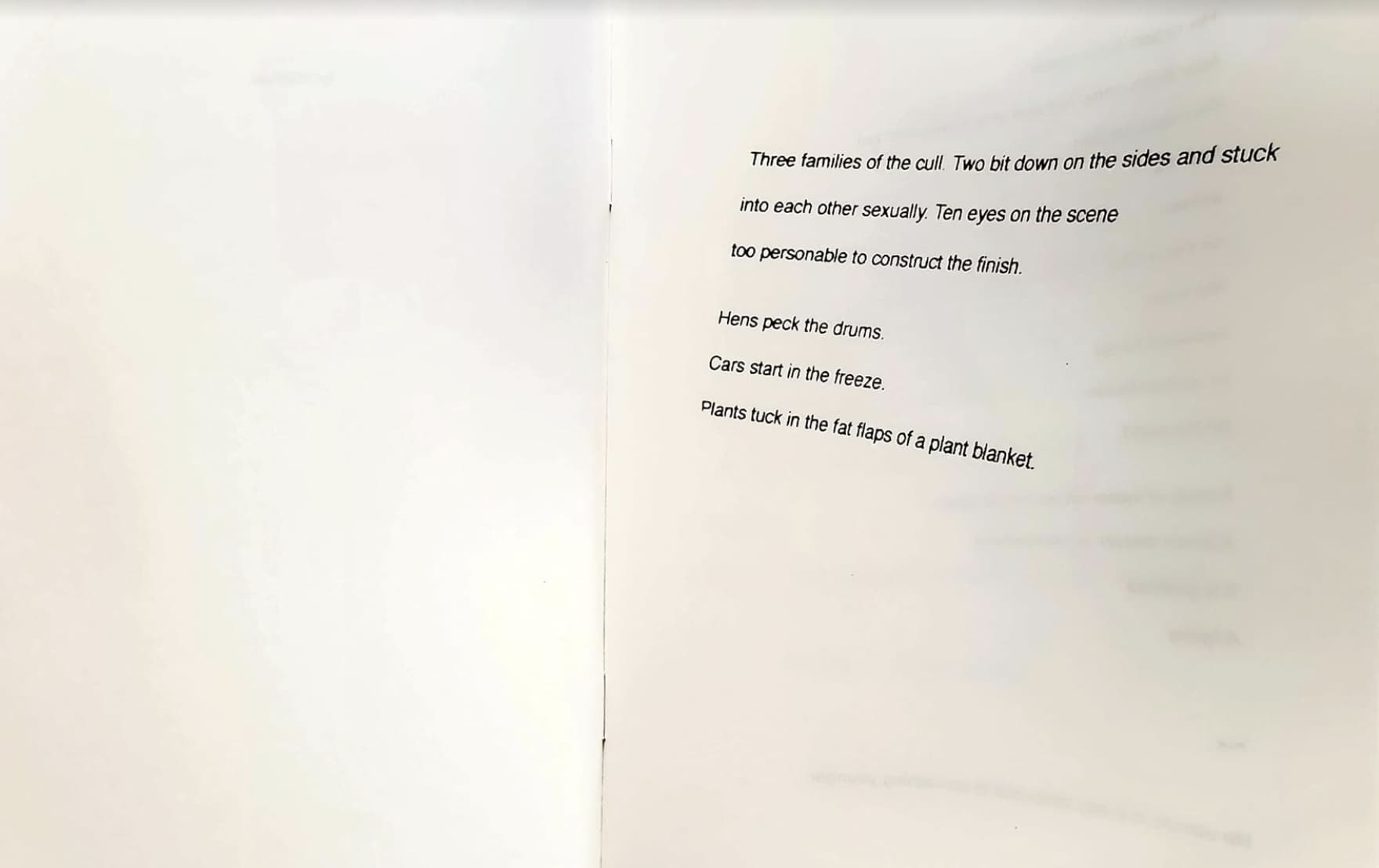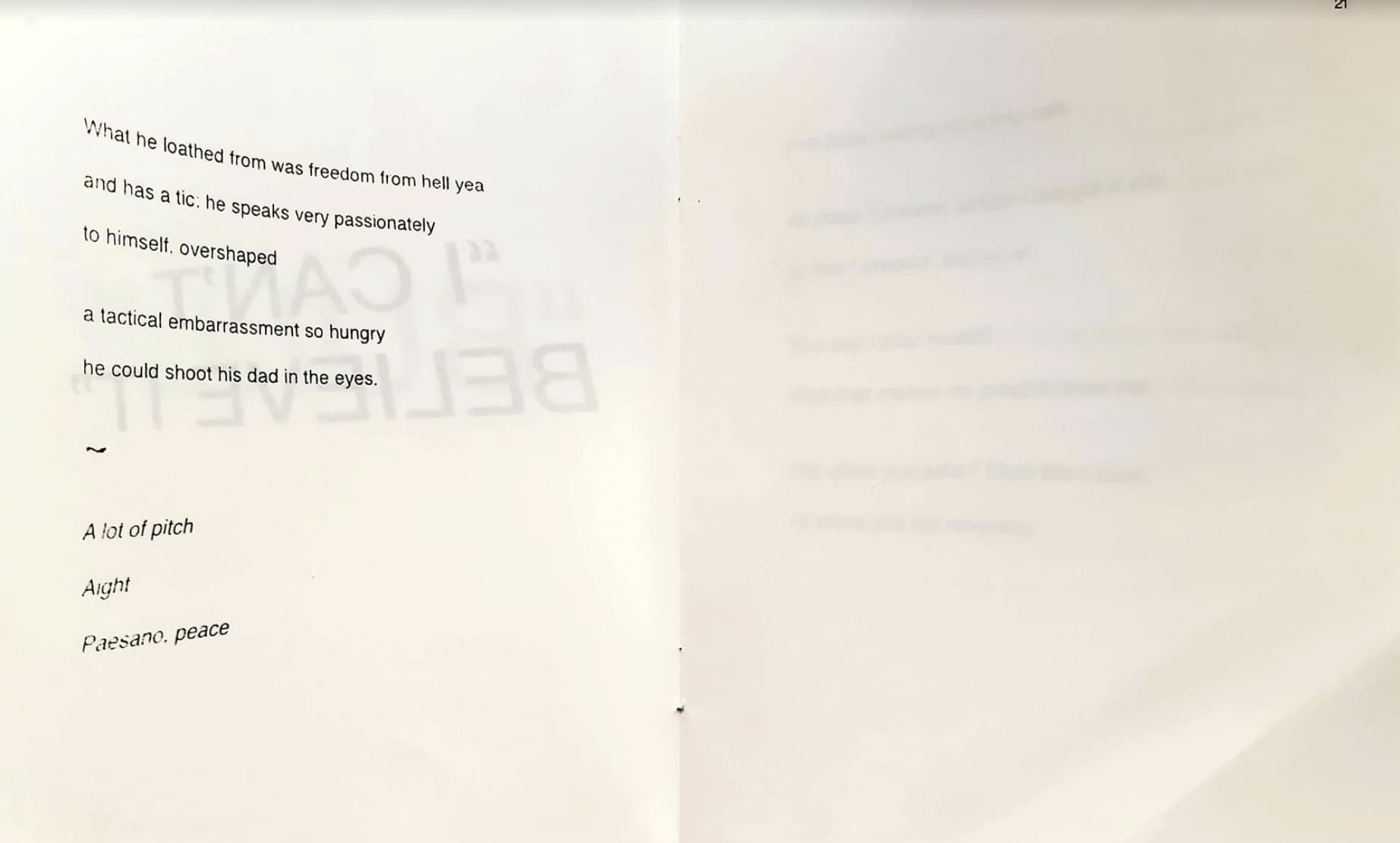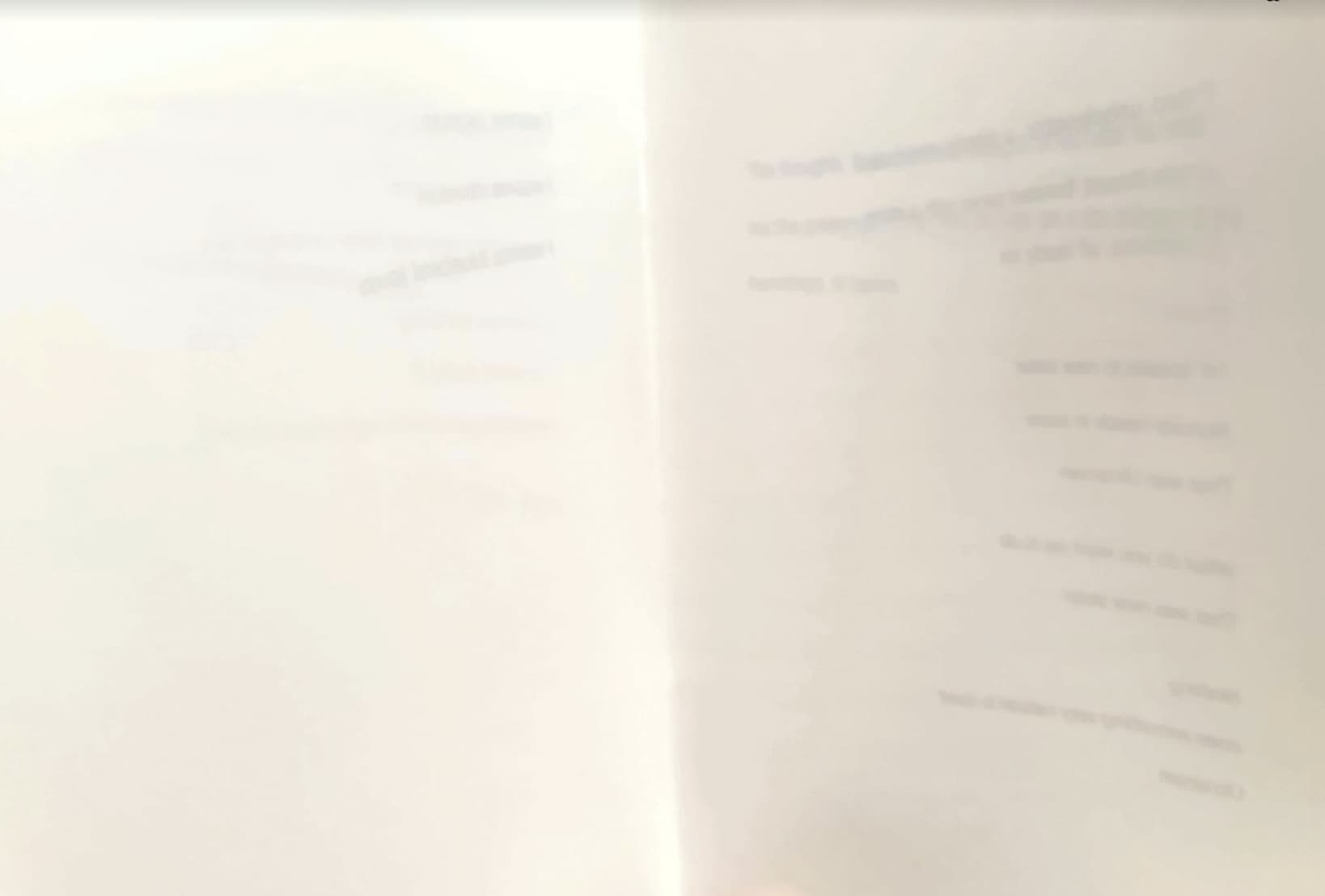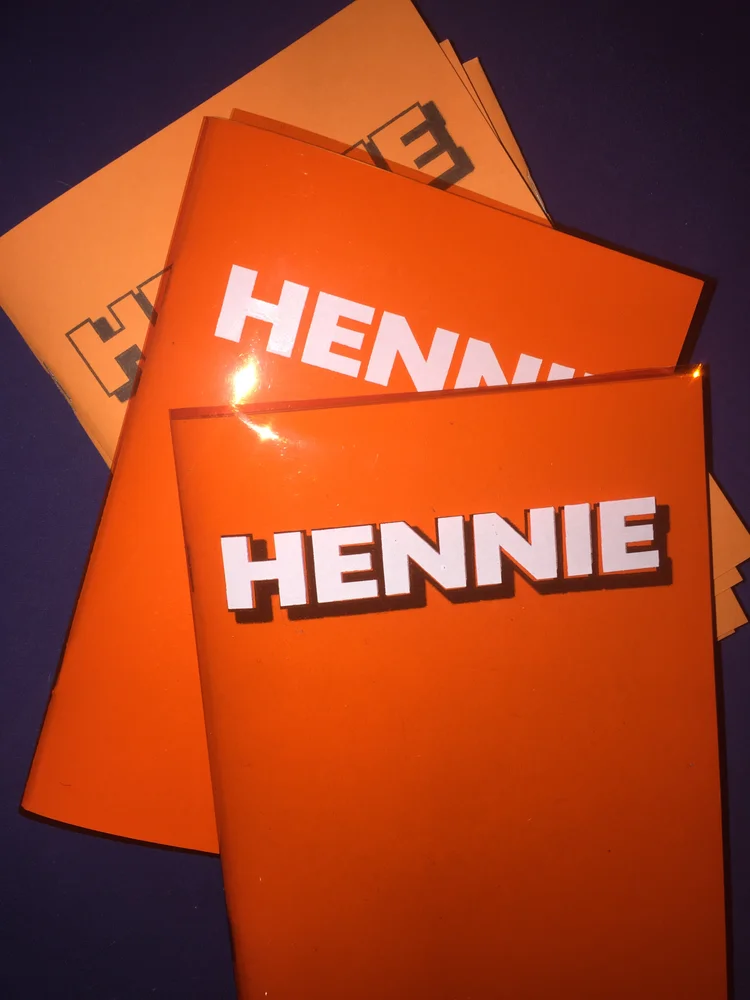There is a face pressing through the plastic. Molding it features into the PVC screen until a functional mouth has begun to take shape. First testing its jaw, then tongue. The fragile roof of the mouth. A mound of flesh pooling in the alcove formed behind the bottom teeth.
It is uttering its first words … “three families of the cull” … “ten eyes on the scene” … “cars start in the freeze” … “a plant blanket” … materializing as distorted dunes. Language is bent and folded. Recycled as an architecture integrated into the landscape. The ecopoetic extended from image to structure.
This wavering articulated with the same spontaneous autonomy as any other limb-in-action. Consistently dynamic across the surfaces of the book, but each movement is unique in its minutiae. Balanced as a simultaneously inward and outward flourish. Rooting itself / pulling an external you (reader / user / bystander) closer / lifting above the surface.

↓
There is an object in the room with me. A problem with no solution (Panteha Abareshi).
↓
Zan de Parry’s Hennie (designed by Zoe Darsee) mutates the stanza into an actionable limb, the book into a mouth of hydraen tongues. Each line writhing in its place. Squirming and alive. Accentuated by the sensory outputs of the base-text … “he feels like a child” … “his ass smells like a blue million” … “he sees eyes in the mirror” … that prod as antennae.
Open spaces form a surface for these lines to extend out from / anchor themselves to. Tentacles feeling towards their environment. With larger appendages requiring more space (such as a spread dedicated to “BULL” or another to “I CAN’T / BELIEVE IT”). Greater scaffolding for greater structures.
↓
A neural system emerges to connect these sensory moments to a more extensive lingering conscience / field of desire. “Everyday exotic matter, forced particles, bosons / A different language more close to solid objects” Approaching a reorientation of the subject-object divide.
The problematically flat hierarchies of Graham Harman’s Object-Oriented-Ontology are contrasted with an acknowledgement of the object (here, book) as something not above the subject, but that similarly occupies space. Something as physically rooted as ourselves. There is an object in the room.
It is incomplete to think of the book as something that occurs within the reader’s head, as some romanticized exorcism of the word on the page to an image in the brain. This is an operation of all language. Of books just as much as articles, poems, product descriptions. Behind the facade, more of the same (John Trefry).
Hennie’s anatomy instead forms in the awkward tactiles of reality. Interfacing with the environment as the reader interfaces with it. The PVC jacket clinging around the body, the paper body opening its pores to the ink, the ink reaching out to the reader and the air. An ecosystem groans. It speaks through grated mineralized vocal cords. There is an object in the room.
↓
But objects cannot speak. They are limited by a primitivized autonomy. A parasitic, or at least, begrudging relationship to the subject that gives weight to their voice, that brings it from the surface into the air. The Hennie’s subtitle of ‘a creation story’ here takes on added meaning as the reader completes what has been laid out in the blueprints. Reading the body as schematics.
The mouth is a machine for creating utterance. For converting language from one medium to another.
In performing the demands of the text, the subject-object divide shifts from chasm to pathway. It is the former in service of the latter. Bending to the whims of the text. There is an object in the room. And thus I must speak. I must complete its task. Giving the squirming appendages of the text something to latch onto, a new environment to prod and explore.
The reader in service of the book. Appeasing the organism.
↓
Blank pages appear throughout the book, splitting unnamed poems (or perhaps segments of one long poem) across the text as isolated clusters. Moments of conscious sprouting, flourishing, and curling into their static position once again. Pockets of activity in an open desert.
From mind to page mind (Rick Myers).
Towards the center, there is a sequence of two pages that cleave the book in half. Either as the conjoining point of twins or the early signs of a telophase. The surface then not as a housing for organismal qualities, but as the dormant flesh of the organism itself. The pink mousse beneath the surface (that ubiquitous something that coalesces to form the surface).

↓
Across the final spread of the text, a repeating and jagged block of BYE’s crawl from verso to recto, unobscured by the gutter. Without the same ailments that affect paperback books (the tight spine, the gutter that consumes, the parentage of mass printing systems), the booklet creates a certain kind of intimate space.
Hennie’s construction is variant and hyper-visible. There is nothing hidden / nothing to hide. The book desires to remain intact. It does not want to be pulled apart. There is no portal drawing you towards the center. No void, no cloak. Every organ present in fine detail. The body opened for all to see.
The anatomical intensities of the book distilled as a dense thriving creature (booklet / zine / saddle-stitch). A mouth articulating through the PVC film, I wanna walk out / I wanna see you.

Mike Corrao is the author of numerous works including Gut Text (11:11 Press), Rituals Performed in the Absence of Ganymede (11:11 Press), Desert Tiles (Equus Press), and Smut-Maker (Inside the Castle). As an artist and designer, his work has been featured in the catalogs of 11:11 Press, Fonograf Editions, Apocalypse Party, Inside the Castle, and other presses. His work often explores the haptic, architectural, and organismal qualities of the text-object. As an editor, he operates CLOAK.wtf.
 Availble from TABLOID Press
Availble from TABLOID Press